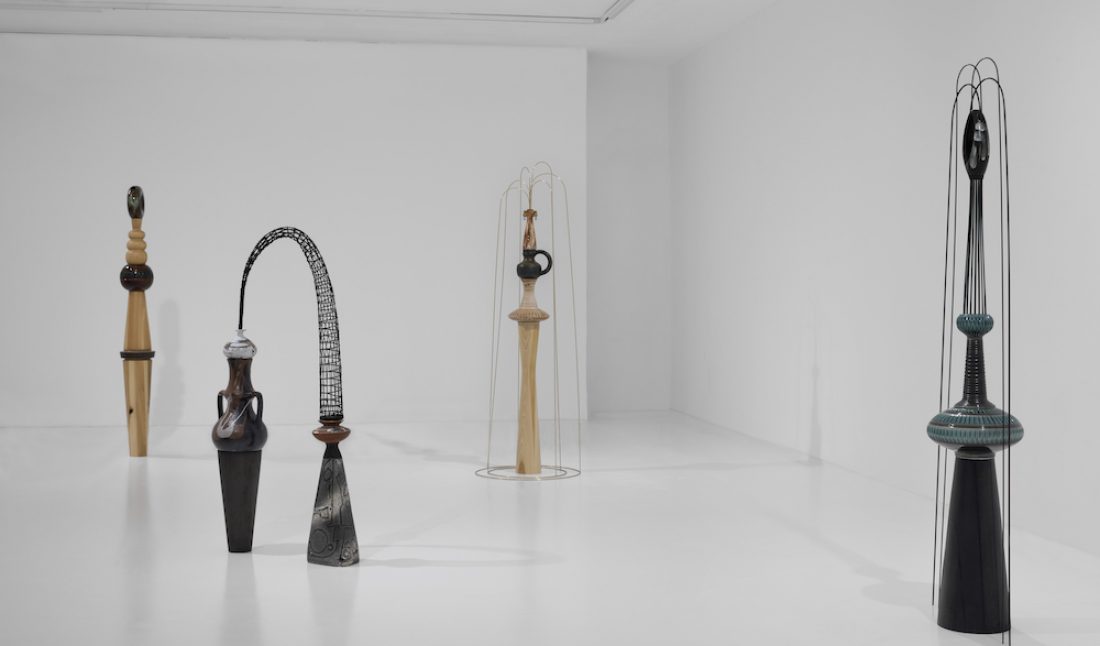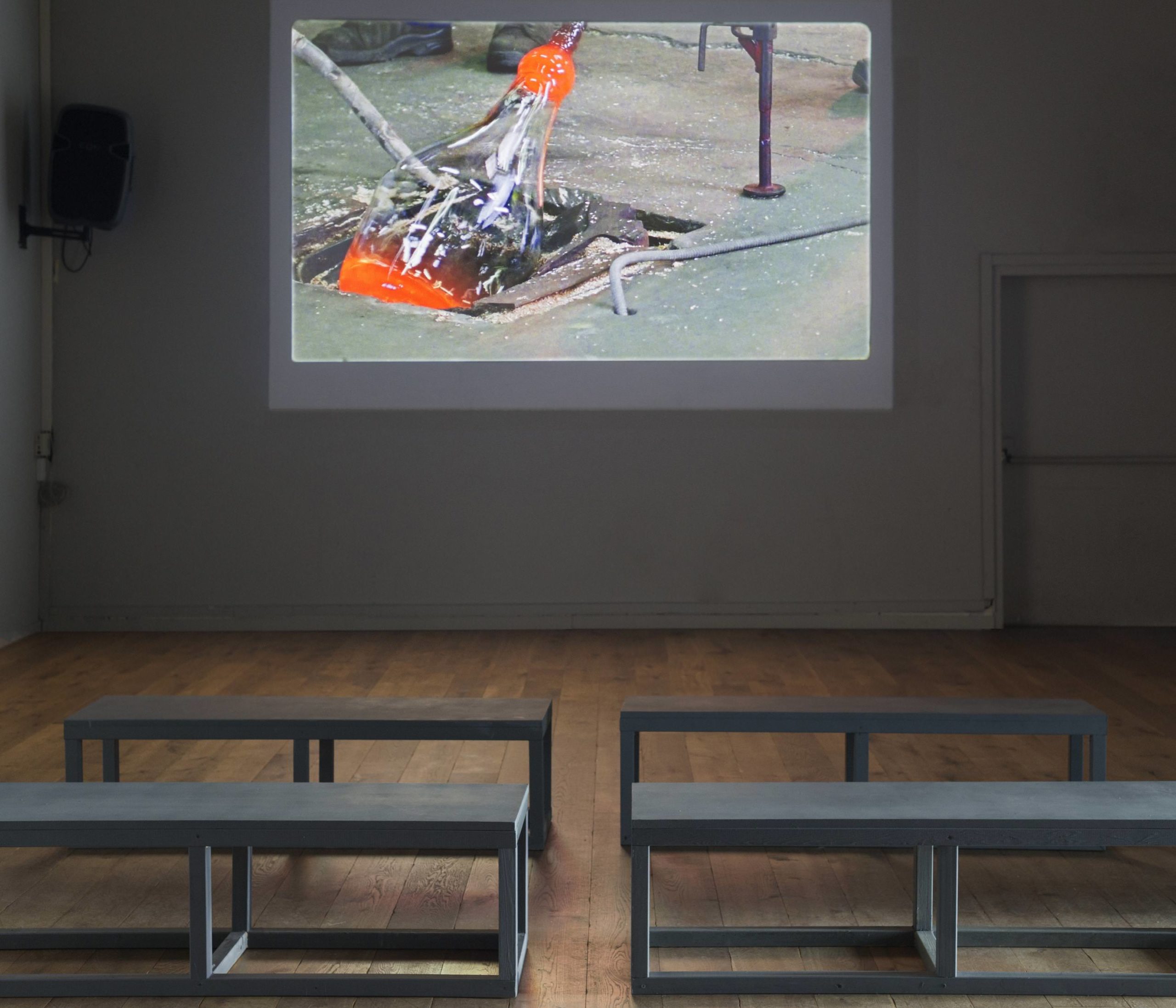Liora Kaplan‘s “Rhythms of Permanent Resonance” closes this weekend at CCA Tel Aviv-Yafo. The exhibition presents a series of towering totemic sculptures that the artist began working on in 2019. They are inspired by historical drawings of fountains, using a variety of materials and techniques in their making—from ceramics to weaving, and more. Her conceptual practice recognizes the history and cultural significance of the objects she collects to create, honoring the artisans who crafted them.
Recently, Kaplan sat down with the director and curator of CCA Tel Aviv-Yafo, Nicola Trezzi, to discuss the show, her thoughts on appropriation, and what she’s working on next.
NICOLA TREZZI: Liora, we finally have the chance to sit down and look back at this project and what led to it. I would like to start from the beginning: In 2019 I saw your work at Braverman Gallery—which eventually started to represent you—and I got really intrigued. Later on, in the same year, I started working on a completely different project with Jonathan Monk; the project, entitled “Exhibit Model Six—The Tel Aviv Version,” consisted of one work by him—a wallpaper covering the entire exhibition space at CCA Tel Aviv-Yafo—enriched by works by other artists. I proposed to him to present your work, which appropriates Israeli ceramics, alongside works by masters of appropriation art such as Louise Lawler, Allan McCollum, and Haim Steinbach. Following your participation in this project with Jonathan Monk, I invited you to have a solo exhibition at the Center. We never spoke about what came before so I wonder how you experienced our first collaboration…
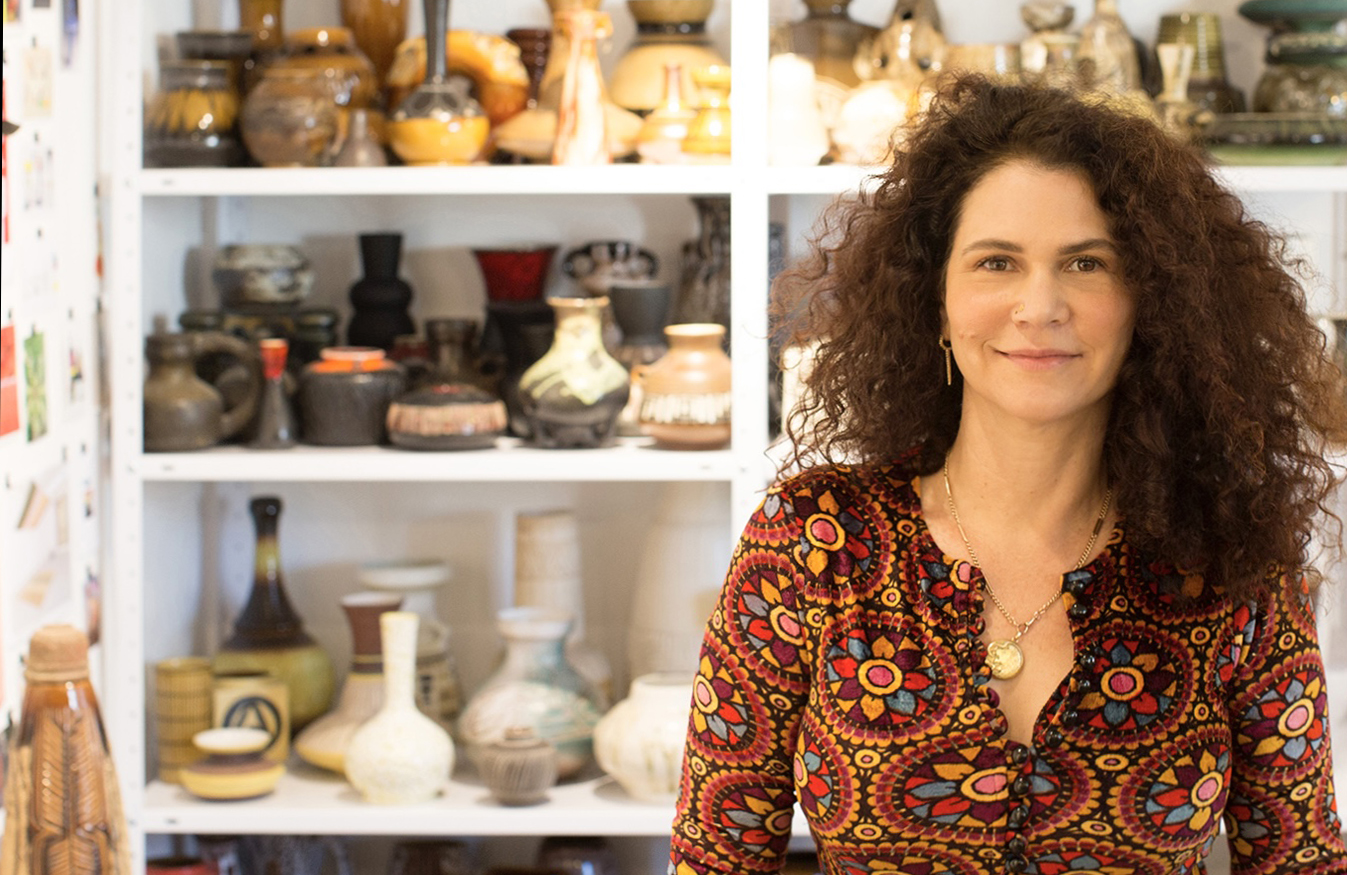 Liora Kaplan, photo by Oshi Yuval.
Liora Kaplan, photo by Oshi Yuval.
LIORA KAPLAN: This project was a point of growth and evolution in my practice. It opened my eyes to new conceptual perspectives. I remember when you came to my studio and asked me if I would agree to such an unusual arrangement, to be part of a group exhibition to be presented “inside” a solo exhibition. What stood out, in particular, was the presence of Jonathan’s wallpaper that took over the space and in which all the works by other artists were immersed. For me, it was a leap of faith but also an exciting deep dive into a whole new approach. As our dialogue developed, I felt comfortable leaving this in your hands… letting go was new to me. Until that moment I felt I had to oversee every aspect related to my work. This is the first time that not only did I let go and trust someone else’s vision but also “walk” inside the mind and point of view of another artist and have my work contextualized by their thoughts and practice.
NT: I always feel that we, the institution, make a promise to artists and we are asking them to trust us and rely on us. This is why when we did a benefit exhibition at CCA Tel Aviv-Yafo, in which you participated, we called it “The Promise.” Back to our project with Jonathan Monk…
LK: I fully relied on you to properly connect all the fragments and of course, you did! My sculptures “tuned” into Jonathan’s site-specific intervention so seamlessly, it seemed as if they were planned in tandem. We even placed [the work] Past is Present near the photographic representation of a work by Jonathan consisting of a wall of large and small bricks that symbolized the father-and-son relationship. My sculpture was also based on a conversation between me and my father, and the vase at its core was created by an artist named Reuven Cohen whose father, Avigdor Cohen, was one of the founders of the ceramic factory where he worked.
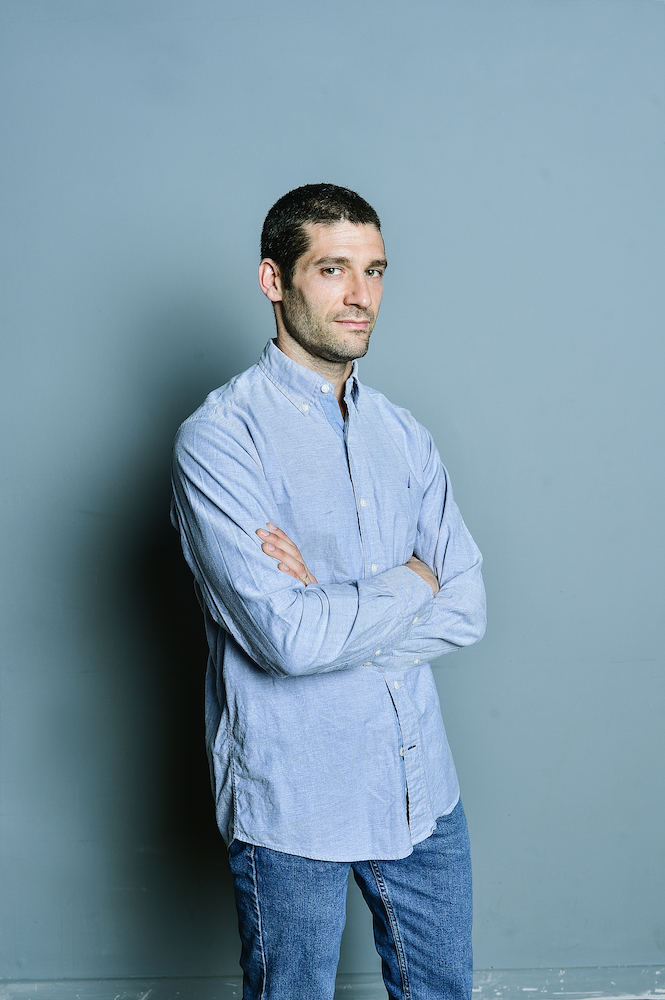 Nicola Trezzi, photo by Ella Barak.
Nicola Trezzi, photo by Ella Barak.
NT: I have been insisting on placing your practice within the legacy of appropriation, due to the way you present objects with cultural significance inside your work. I thought we could draw a line—albeit a zigzagging one—connecting the employment of the cropped Marlboro campaign by Richard Prince to how a Harsa vase becomes part of your work. I am using this example because it speaks about cultural symbols in the United States and Israel respectively. Can you share your thoughts about such a decision? Although in the field of art, it has a very specific context, it is indeed a loaded word, what do you think about the word?
LK: I see appropriation as a form of appreciation; I was raised with this credo and I also believe that the group of ceramic artists I research in my practice also saw appropriation in this way. They worked during a unique moment in the history of this country and through them, through the way they brought together European tradition and elements of the Israeli landscape, I could finally connect to my heritage without necessarily drawing references to political events. The aim behind every action I do is to strive for appreciation and authenticity, and by authenticity I mean my intention, my belonging, my “frequency.” I have the opportunity and the honor to reintroduce and preserve the legacy of these objects and the craft that came before me. In a way, I am not really appropriating them; rather, I am extending their context and introducing them within my own.
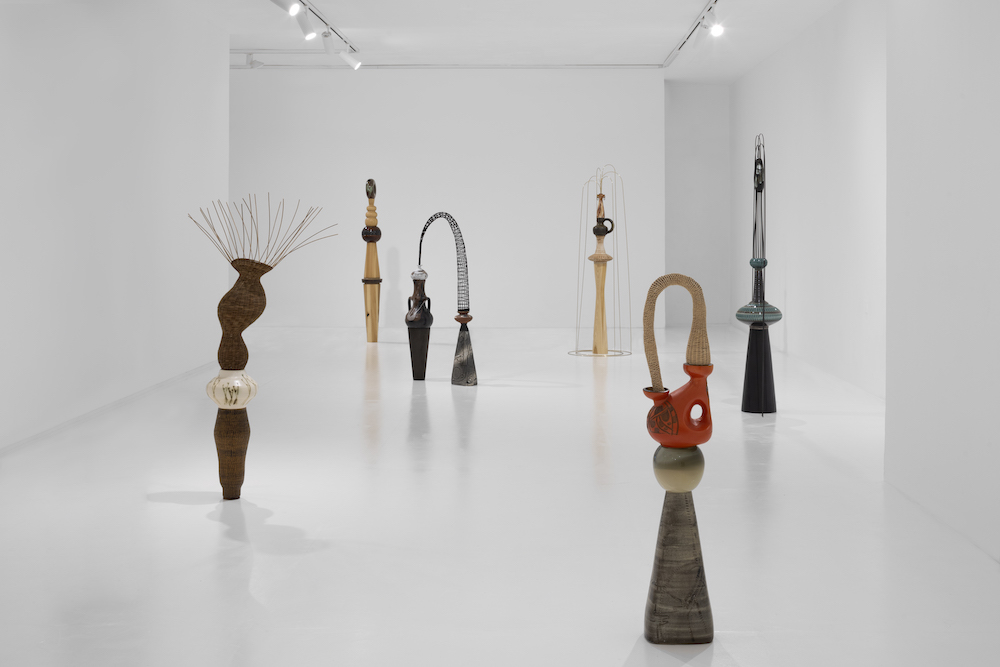 Installation view of “Liora Kaplan: Rhythms of Permanent Resonance,” 2022 at CCA Tel Aviv-Yafo, photo by Tal Nisim.
Installation view of “Liora Kaplan: Rhythms of Permanent Resonance,” 2022 at CCA Tel Aviv-Yafo, photo by Tal Nisim.
NT: Following the path you just outlined, I am not sure you are appropriating them. It is more about enlarging their scope, bringing them into your field.
LK: Art always works within a social, political, and geographic context and, at its most critical point, it reacts to the times, honoring what came before while anticipating what will come after. It is about connection rather than appropriation. I have no intention of making these vases mine, recreating them, altering them or “arming” them, conceptually or physically. They exist within my work so that their “creators without a name” as I call them, will be finally recognized. Through my practice, for instance, I got in touch with the Kfar Menachem factory, its former workers, and the families of the artisans. They came to see the exhibition, we spoke, we cried, and I learned that my artistic action triggered something bigger…now they are opening a museum for their ceramics. This is just an example to describe this emotional and significant journey. Thanks to this exhibition these objects are having a space, a stage to sing, to communicate, to shine. When I decided to use these vases as the core of my sculptures they became my silent partners, with whom I entertain unspoken conversations, hoping that visitors will feel invited to do the same.
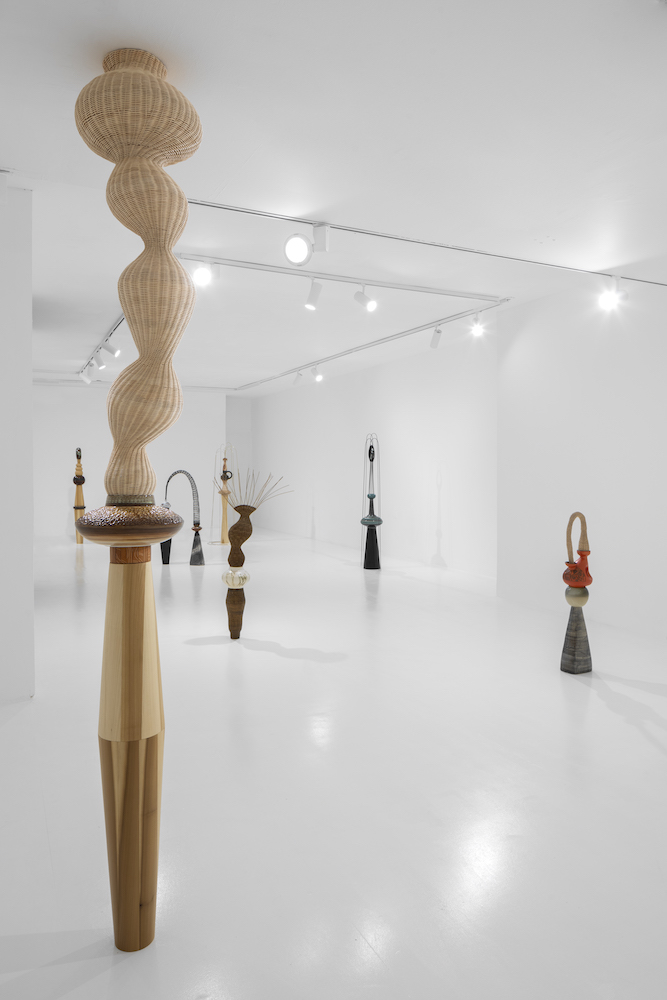 Installation view of “Liora Kaplan: Rhythms of Permanent Resonance,” 2022 at CCA Tel Aviv-Yafo, photo by Tal Nisim.
Installation view of “Liora Kaplan: Rhythms of Permanent Resonance,” 2022 at CCA Tel Aviv-Yafo, photo by Tal Nisim.
NT: In fact, throughout the life of your exhibition at CCA Tel Aviv-Yafo, which is eight weeks long, I have been using the word appropriation less and the words “inclusion” or “incorporation” more. The first speaks about bringing something, the vase, or someone, the artisan who did the vase, in; the second echoes the body due to the fact that your sculptures are almost animated, each of them has its own presence. How do you feel about this shift in the way your work is communicated?
LK: In one of your early studio visits, right after the first lockdown, I showed you my inspiration wall, which includes images of antique musical instruments, of primitive tribal shamans, images of works by Oskar Schlemmer, Ruth Asawa, Ettore Sottsass, Sonia Delaunay, but also textures and materials that spoke to me. This wall is my “northern star,” where all my starting points are brought together, where I keep ideas that I might later develop; it makes my practice cohesive and gives me direction. We had the most interesting conversation and you said that this wall reminds you of an orchestra where everyone has a different sound. Later on, I started to refer to it as “my tribe.” During this studio visit, you suggested exploring sizes and proportions. I was mostly going for tall sculptures and you felt I should be open and it was a pivotal moment for me and for the creation of the works presented in the exhibition. I feel that the different sizes of the eight sculptures are one of the strongest elements of the exhibition, they bring a kind of diversity that animates them.
 Installation view of “Liora Kaplan: Rhythms of Permanent Resonance,” 2022 at CCA Tel Aviv-Yafo, photo by Tal Nisim.
Installation view of “Liora Kaplan: Rhythms of Permanent Resonance,” 2022 at CCA Tel Aviv-Yafo, photo by Tal Nisim.
NT: I really would like you to speak about the way you give titles to your sculptures; I know they are all fragments of texts written by visionaries of all fields: literature, philosophy, design, art, etc. My favorite one is Ritual Whisper, which comes from Sottsass, who once said: “decoration can be a state of mind, an unusual perception, a ritual whisper.” I think that the way you take one part of a bigger thing is connected to the way you present existing objects—the vases—in your work. What do you think?
LK: Ritual Whisper is one of my favorite too! These are seminal figures I follow and admire, they are meaningful to me throughout my journey. You are of course completely right, it is actually the same action. I identify parts of these meaningful quotes as a manifestation of what the sculpture is trying to say.
NT: I have always been interested in how artists deal with authorship and its numerous variations. In your work, I can see four kinds: the authorship of the artisan who made the vase in the 1960s, for instance; the authorship of the fabricator you are working with very closely, either to blow glass or carve wood; your authorship when you are weaving the rattan or welding the brass; and, last but not least, your “overall authorship” when you present all the aforementioned components as one work of art. I wonder how you feel about such surgical analysis of your modus operandi.
LK: It took me time to learn my role as an artist and fully understand my practice. The one commanding the hierarchy is actually the sculpture itself, in a way you can think about it as the showrunner. It’s the sculpture that has the bigger picture. I am the channel through which the work goes in order to be manifested. This manifestation begins with my conversations with the ceramic pieces I “hunt” and then bring to my studio. Sometimes I see the shape, sometimes only a vibe, and sometimes it’s something more fully formed. When I have an idea about the materials for a piece I start working on it, oftentimes without knowing where this journey is going to lead me.
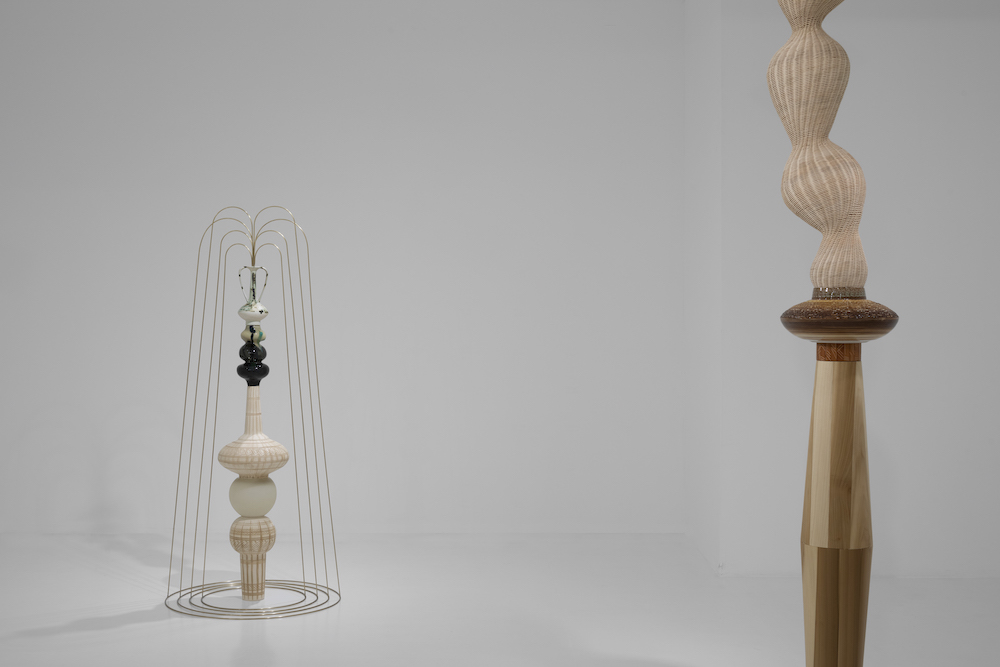 Installation view of “Liora Kaplan: Rhythms of Permanent Resonance,” 2022 at CCA Tel Aviv-Yafo, photo by Tal Nisim.
Installation view of “Liora Kaplan: Rhythms of Permanent Resonance,” 2022 at CCA Tel Aviv-Yafo, photo by Tal Nisim.
NT: This journey often generates collaborations…
LK: Yes, when I don’t know how to craft something myself, I go through the process of finding great craftsmen with whom I can work, who have the specific skillset I need but also the right mindset, which means to be open to and interested in a project that requires a lot of patience and devotion. Not every artisan is suitable. Then a new conversation starts between me and them, they become a continuation of my hands, just like artists who use a computer in order to execute an idea. These people are my team and through them, I can bring to life my ideas, sometimes thanks to a collaborative effort, and most of the time through executing my direction.
NT: You are now talking about the individuals involved in the making of your work but while I was listening to your way of describing how the sculptures come to life, I would like to ask, what about the materials employed?
LK: Of course, the materials also change my relationship to the sculpture in formation and to my practice at large. Some of them “give more” than others, some are unpredictable, some are very loyal. For example, it is impossible to decide the specific texture of wood; glass is always mysterious, you can’t predict what shape it will take, and sometimes you need to remake it over and over again until it meets your expectations.
NT: That makes me think about the balance you create between two positions: the first, connected to the readymade, is obviously a conceptual one; the second, linked to what you just said about materials, speaks about craftsmanship. In other words, you are a kind of “conceptual artisan,” which someone might argue is an oxymoron, since, most of the time, these two positions are in contradiction with each other. Can you respond to this?
LK: For readymade and conceptual artists, the idea is more important than the object; the idea is the artwork. It’s true that in many ways my practice could not exist without being in conversation with the notion of readymade; at the same time, I do not see the readymade as a core element of my practice since the vases I incorporate in my work are echoing the context in which they were made and the aura they hold. I am fascinated by the social climate and the time in which they were created and the identity they embodied. I am interested in the collective consciousness that gave birth to this movement and the questions that the craftsmen asked themselves, the emotional trials and tribulations they endured at the time, and how those are reflected in the aesthetic choices they made. I have a discourse with all of this while reflecting back on my own memories, my childhood, my personal journey, and my practice. The tension generated by such a condition is my space, the space in which I create.
My interest in the masterful craft of artisans that came before me and the political landscape that informed their work is not quite aligned with the conditions that led artists to invent and use readymades. Since I still see the connection you are making, I would say that my relationship with the readymade is an unconventional one.
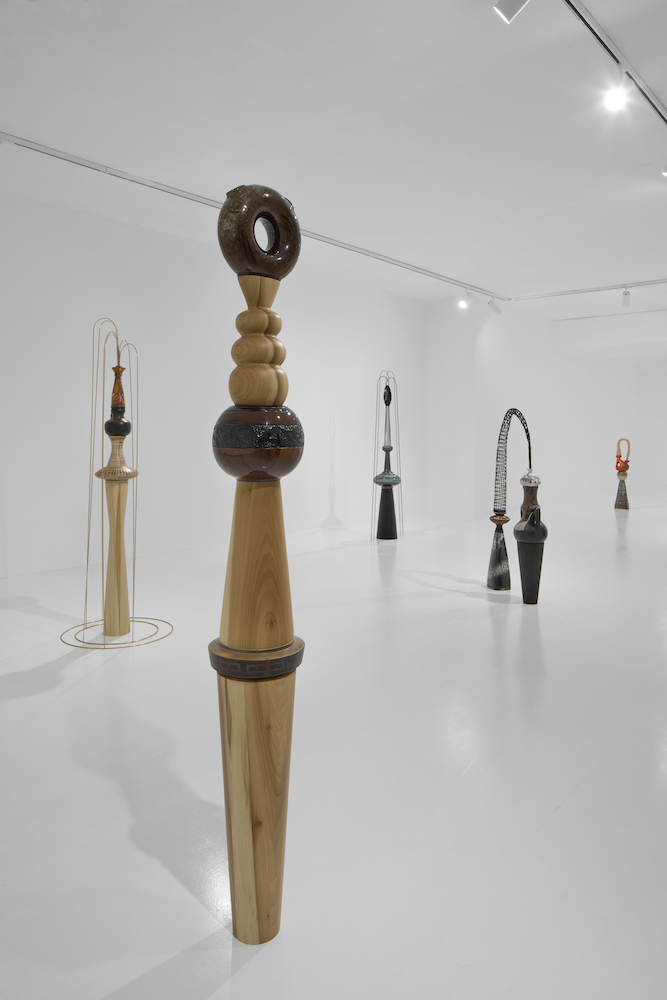 Installation view of “Liora Kaplan: Rhythms of Permanent Resonance,” 2022 at CCA Tel Aviv-Yafo, photo by Tal Nisim.
Installation view of “Liora Kaplan: Rhythms of Permanent Resonance,” 2022 at CCA Tel Aviv-Yafo, photo by Tal Nisim.
NT: I feel that with your exhibition at CCA Tel Aviv-Yafo, you closed a chapter in your path as an artist; it started with the three totems presented inside the work of Jonathan Monk and it ended with the eight totems you presented in your solo exhibition. My question is: what is next?
LK: As one chapter closes, another opens. As you know, this project is done in partnership with KMAC Museum in Louisville. It was important to use the opportunity of two institutions collaborating to present different aspects of the practice. For KMAC, I am currently working on marble sculptures that are created from scratch via a 3D software employing the language that I have delved into in the last few years, and drawing visual references from the vases that I worked with. At the same time, I will be utilizing a language of my own, with new patterns, and motifs. At a later stage, the 3D models will be given to artisans, who will create the works; specifically, I will work with a marble quarry and foundry in Portugal that has served palaces and castles from the 17th century until today. Therefore there will be a clear tension between advanced technology and handmade work. This is a whole new adventure for me and I will learn what the stone can and cannot do.
Following my continuous fascination with the representation of water sources, some of these sculptures will be actually operating water fountains, which opens a whole new avenue to the work. Throughout the history of humankind, fountains have served as a place for gathering, for the establishment of communities. I’m deeply aware of such a legacy and see my upcoming exhibition as a space that will generate new energetic fields. In order to enhance such conditions, I will activate the space through discussions, sound meditations, rituals of purification and, for the first time ever, I will be collaborating with Josh Pack, a sound facilitator and a revered 3D soundscape artist and composer, to create an immersive sound environment for the sculptures to exist.
NT: I would like to end this interview by asking if you have something you would like to say about your work, or share about your practice, that you haven’t been asked.
LK: I have been so fortunate to encounter people who took interest in this exhibition and it gave me the opportunity to answer different questions, to react to disparate points of view, and embrace other perspectives. I have learned so much about my practice and my work just by engaging in these conversations. At this point, I could benefit by letting the sculptures “speak for themselves” and observing what they generate in the mind of those who encounter them.
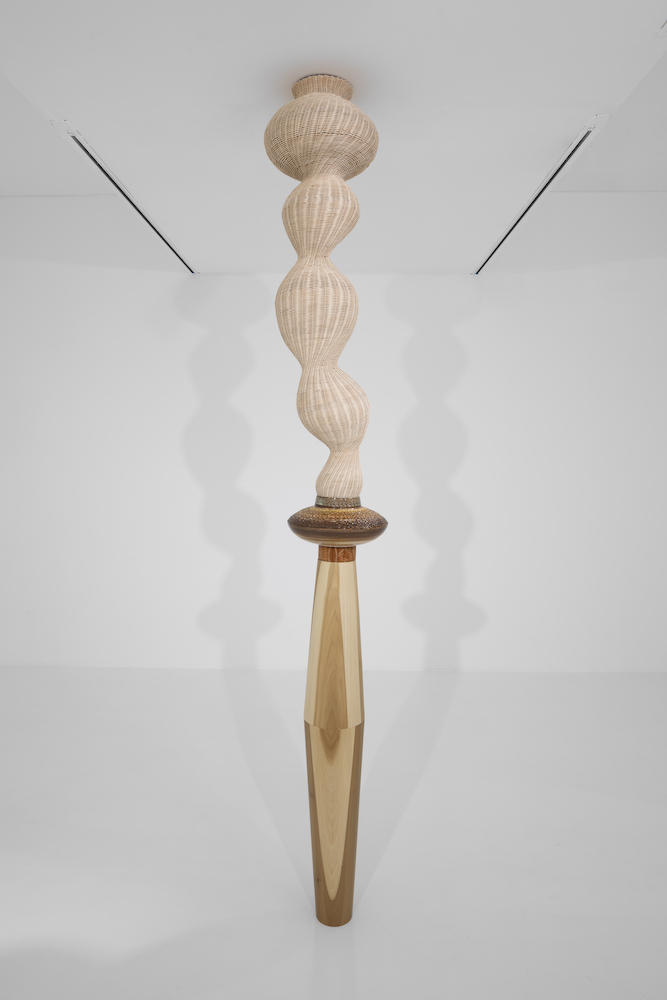 Installation view of “Liora Kaplan: Rhythms of Permanent Resonance,” 2022 at CCA Tel Aviv-Yafo, photo by Tal Nisim.
Installation view of “Liora Kaplan: Rhythms of Permanent Resonance,” 2022 at CCA Tel Aviv-Yafo, photo by Tal Nisim.






